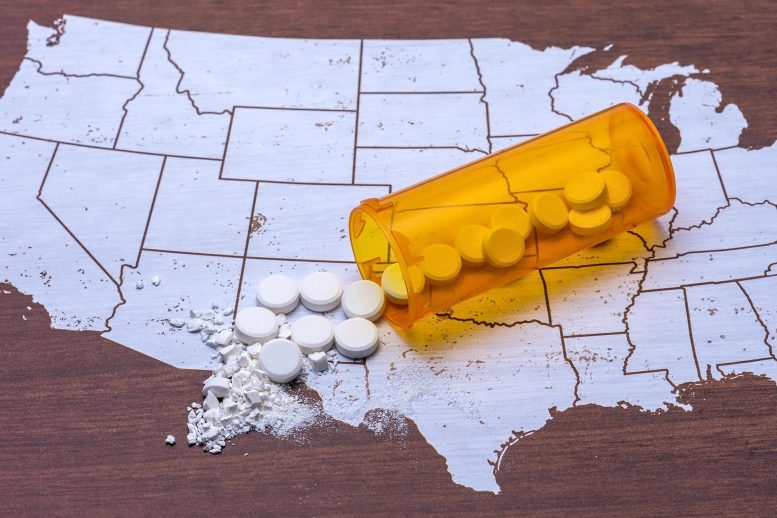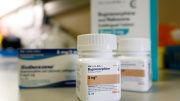
A study from Rutgers underscores the importance of enhanced prison reentry programs in tackling the U.S. opioid crisis. It found that recent inmates have a higher opioid overdose risk, and those on psychiatric medications or with injection drug history are more inclined to seek post-release treatments.
A study from Rutgers suggests that enhancing prison reentry programs could reduce the opioid overdose death rate in the U.S.
With opioid overdose deaths surging in the United States, many communities are urgently seeking effective solutions. A recent Rutgers-led study has identified strengthening prison reentry programs for the highest-risk users as one of the most promising interventions.
“For people who use drugs and have been in prison for several years, the reentry period can be chaotic and disorienting,” said Grant Victor, an assistant professor in the Rutgers School of Social Work and lead author of the study published in the Journal of Offender Rehabilitation.
“Closing the health care services gap after release, especially for those with psychiatric and behavioral health issues, may improve people’s willingness to engage with opioid use treatment,” Victor said.
Incarceration is a significant risk factor for opioid-related deaths. A 2013 study found the likelihood of a fatal overdose is approximately 129 times greater for someone recently released from prison compared with the general population. Another study, led by Victor, found that 20 percent of all opioid-related overdose deaths in one community involved people released from prison within three years.
To investigate risk factors and potential solutions, Victor and colleagues at Northern Arizona University and Wayne State University applied machine learning to data from a Midwestern reentry program for incarcerated individuals with co-occurring opioid use and a mental health disorder.
“There were two things that we wanted to understand,” Victor said. “First, what factors increase the likelihood someone will take medication for opioid use disorder in the month following their release from prison? And second, within this already vulnerable group, is there a subgroup that is at the highest risk of opioid death after release?”
The researchers found that people who were prescribed psychiatric medication in the months before release were most likely to begin opioid use disorder treatment. A participant’s history with injection drug use was another causal factor: Those who reported using injection drugs were more likely to report seeking treatment post-release than people who didn’t inject drugs.
Among other things, the findings suggest safe syringe services within prisons should be expanded, Victor said. These services not only improve opioid use treatment engagement but are effective in mitigating the transmission of infectious diseases, such as HIV and hepatitis.
“Getting the most vulnerable people into a healthcare ecosystem following release seems to benefit those who are susceptible to opioid overdose,” Victor said. “We found that those who were engaged in psychiatric treatment had a higher likelihood of engaging in opioid treatment programs.”
Few studies have described the positive relationship between psychiatric pharmacology treatment and opioid use treatment among a reentry population, Victor said. One reason: Opioid use reentry programs are rare in the U.S.
“These types of reentry programs don’t happen in most prison systems,” he said. “But our findings support previous research that shows if you engage with this population during incarceration, it’s associated with improved outcomes post-release.”
Given these findings, Victor said state and federal prison systems should consider improving their “cascade of care” for opioid use, such as implementing standardized screening tools to identify at risk individuals in prison and supporting robust and accessible services when they are released.
Reference: “Applied machine learning analysis: Factors correlated with injection drug use and post-prison medication for opioid use disorder treatment engagement” by Grant Victor, Ariel Roddy, Danielle Lenz, Tamarie Willis and Sheryl Kubiak, 24 May 2023, Journal of Offender Rehabilitation.
DOI: 10.1080/10509674.2023.2213693









The best way to lessen the negative effects of the opioid epidemic, is to eliminate the black market in opioids. Nearly all the negative effects associated with opioid abuse are a result of the black market.
Without the black market, there would be much less disease from nonsterile injections, gang violence over sales territory, overloaded courts, deaths from unintentional overdose, taxes spent on incarceration, …….. More importantly, those suffering chronic pain could get enough analgesics to control their pain, if their doctor recommended an insufficient dosage. Now, shopping around for a doctor that will prescribe enough will have law enforcement investigating you for the non-crime of “doctor shopping”, and get your doctor investigated for intentionally overprescribing of “controlled substances”.